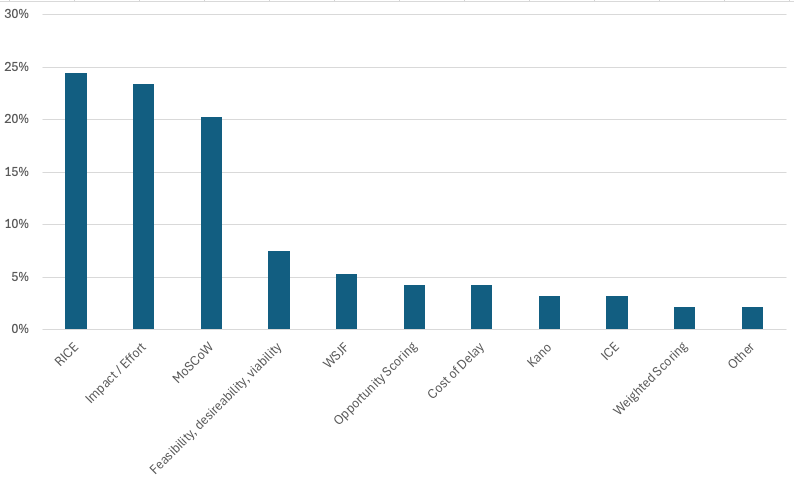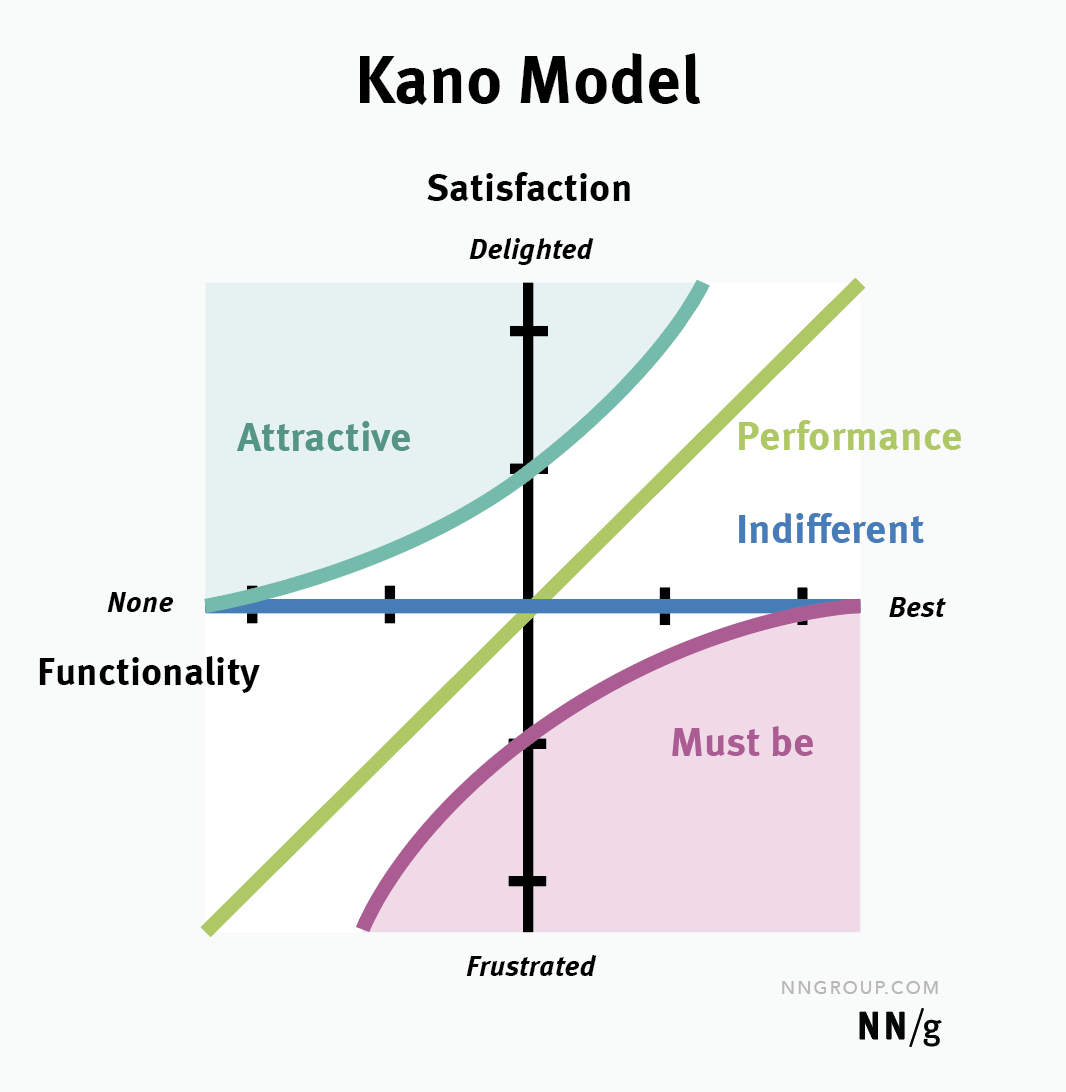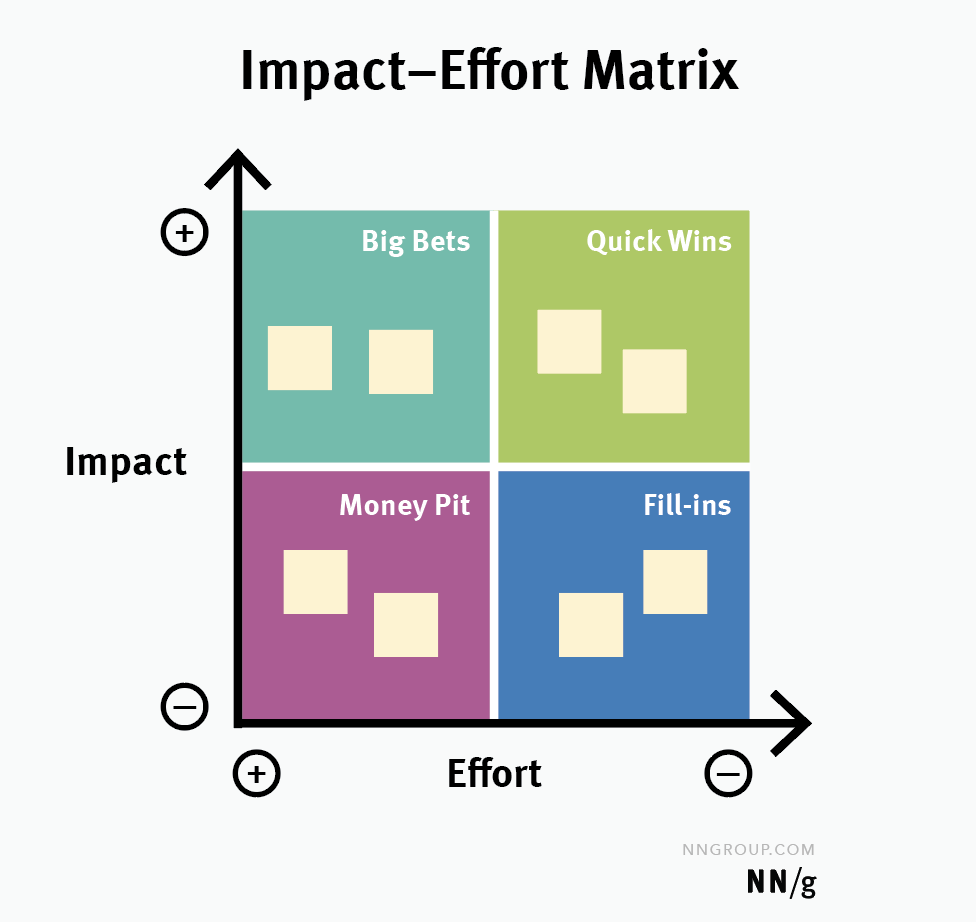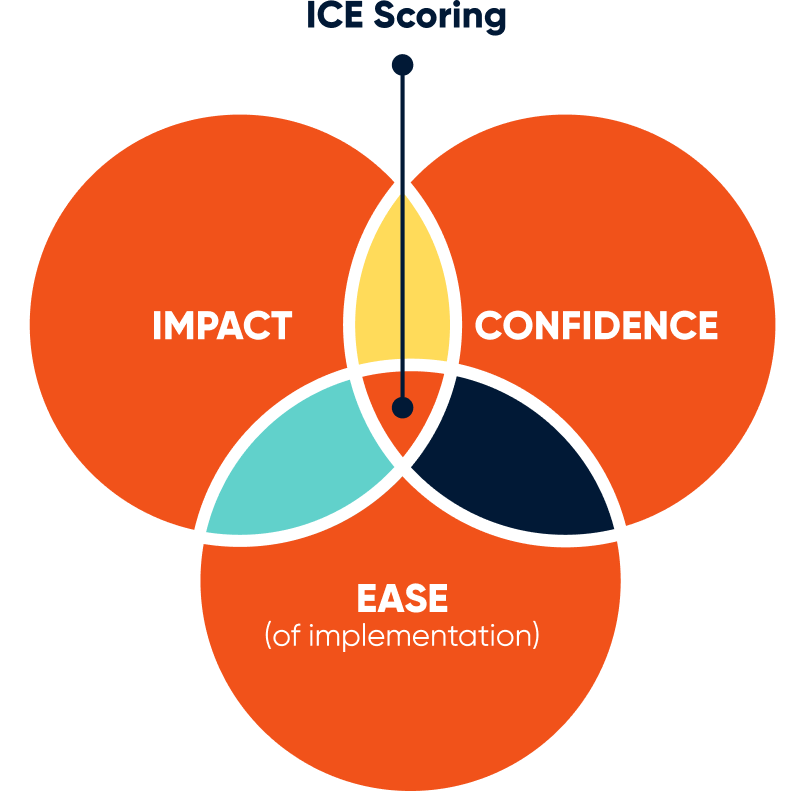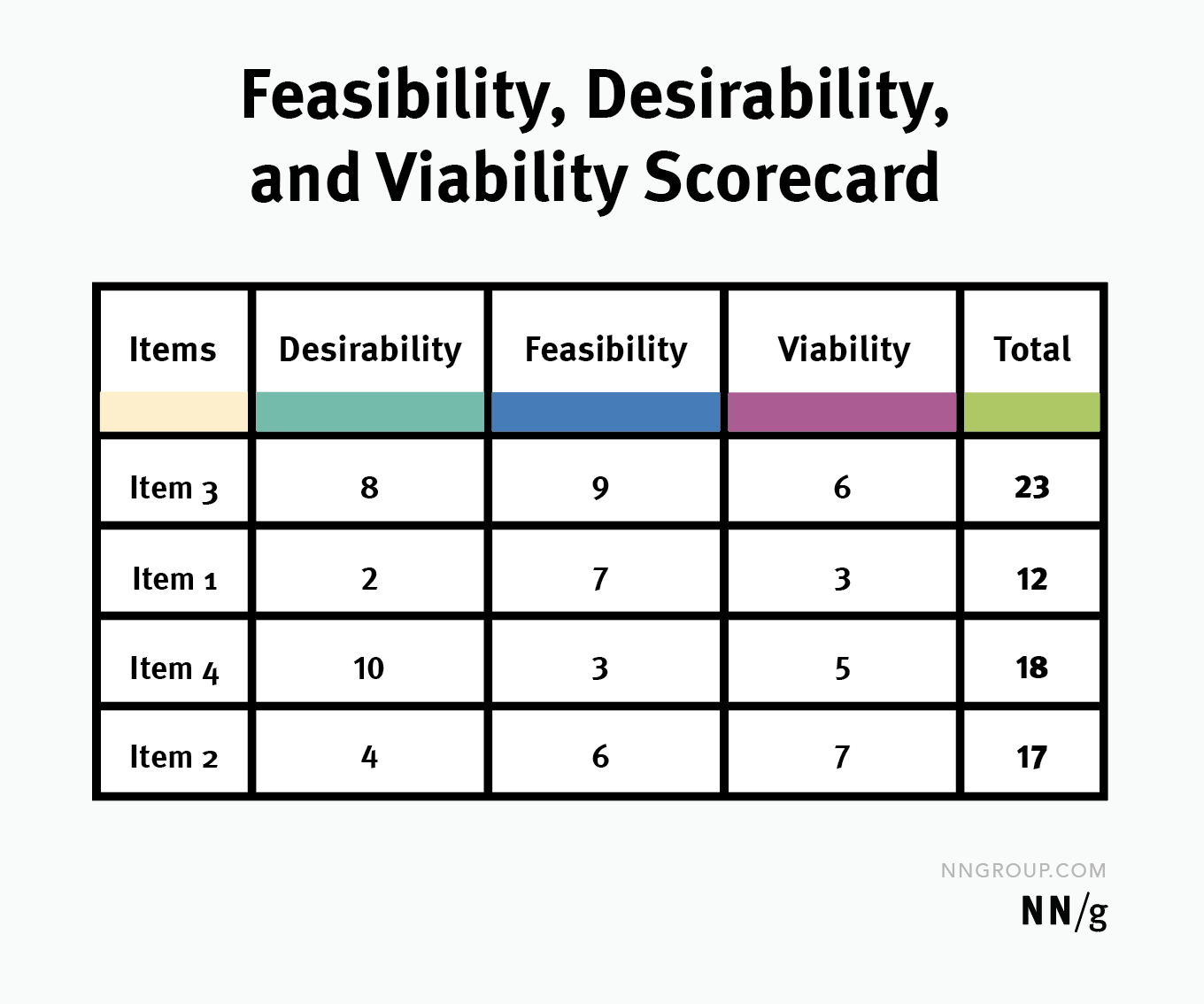Product Prioritization Frameworks: Top 10 Most Popular

Ruben Buijs
Updated on Nov 25, 2024
In product management, data-driven decisions create better roadmaps. They help you justify plans to stakeholders, listen to customers, and build features users need—boosting satisfaction and revenue.
Prioritization frameworks help teams make data-driven decisions and focus on what matters most. While many frameworks exist, 68% of teams rely on just three. This article explores these three along with seven additional methods.
What are prioritization frameworks?
Prioritization frameworks provide a structured approach to deciding which features or projects to focus on next.
While not a silver bullet, they help move beyond intuition or personal preferences (or HiPPO – Highest Paid Person's Opinion) by using clear criteria and data to evaluate and rank initiatives.
This approach improves alignment with business goals and customer needs, ensuring the most valuable and impactful work is prioritized.
Overview of prioritization frameworks
There are many prioritization frameworks available, below we will dive into 10.
But first, I conducted research in November 2024 with 94 Dutch Product Teams to see which ones they use most.
Framework usage amonst Dutch Product Managers and Product Owners
It's interesting to see RICE, Impact / Effort, and MoSCoW taking the lead
Below is a summary table of the prioritization methods we will discuss in this article.
| Framework | Description | When to Use |
|---|---|---|
| RICE | Evaluates features based on Reach, Impact, Confidence, and Effort. | When you need a quantitative and objective method. |
| Kano | Categorizes features into basic needs, performance needs, and delighters based on customer satisfaction. | When understanding customer satisfaction drivers is crucial. |
| Impact Effort (Value/Effort) | Assesses features based on their value and the effort required to implement them. | For quick prioritization in fast-paced environments. |
| ICE Scoring Model | Ranks features based on Impact, Confidence, and Ease. | When seeking a straightforward and rapid ranking method. |
| The MoSCoW Method | Divides features into Must-haves, Should-haves, Could-haves, and Won't-haves. | When managing scope and ensuring critical features are delivered first. |
| Opportunity Scoring | Evaluates features based on the gap between customer needs and current offerings. | To uncover and prioritize unmet customer needs. |
| Weighted Scoring Prioritization | Assigns weights to various criteria and scores features based on these weights. | When needing a detailed and customizable evaluation process. |
| WSJF (Weighted Shortest Job First) | Calculates cost of delay divided by job duration to prioritize high-value work quickly. | For Agile teams aiming to maximize economic benefits. |
| Cost of Delay | Quantifies the economic impact of delaying a feature to prioritize based on urgency and value. | When timing and financial considerations are critical. |
| Feasibility, Desirability, and Viability Scorecard | Assesses features based on their practicality, user appeal, and business sustainability. | To ensure balanced and sustainable product development. |
Each framework offers unique advantages and is suitable for different scenarios. Choosing the right one depends on your specific needs, the nature of your projects, and the factors that are most important to your team and stakeholders.
Now, let's dive deeper in each of them.
Common product prioritization frameworks
RICE
RICE is a prioritization method that helps you evaluate and prioritize features based on Reach, Impact, Confidence, and Effort.
RICE is particularly useful when you need a quantitative method to assess multiple features objectively. It works by assigning scores to each feature based on its Reach, Impact, Confidence, and Effort, enabling teams to compare and prioritize them effectively. For a comprehensive guide and template, visit RICE Prioritization Guide and access the RICE Template.
Components
| Component | Description |
|---|---|
| R (Reach) | How many of your customers would experience the new idea |
| I (Impact) | If the idea pans out, how much it would affect conversion |
| C (Confidence) | How likely it is to work |
| E (Effort) | Total effort needed to implement/build, usually in person-months. |
What has higher priority?
In RICE, assign a value to each component for every feature and use the following formula:
RICE Score = (Reach × Impact × Confidence) / Effort
Features with higher Reach, Impact, or Confidence scores receive higher priority because they affect more users, contribute significantly to your goals, and have a higher certainty of success. Conversely, features that require more Effort to implement will have their priority lowered. This ensures that you focus on initiatives that maximize value while efficiently using your resources.
Pros
-
Provides a numerical way to compare features, making decision-making clearer.
-
Aligns feature development with business objectives by focusing on high-impact areas.
-
Considers multiple factors, leading to more balanced product development prioritization.
Cons
-
Calculating scores for many features can take a lot of time.
-
Depends on accurate estimates, which can sometimes be hard to obtain.
-
May miss out on important qualitative aspects like user experience.
📘 Read more in our RICE Prioritization Guide
Kano
The Kano model is a framework for prioritizing features based on customer satisfaction and their impact on delight.
Kano is relevant when you aim to understand how different features will affect customer satisfaction. It categorizes features into basic needs, performance needs, and delighters, helping teams balance essential functionalities with innovative enhancements.
Components
| Component | Description |
|---|---|
| Basic Needs | Fundamental features that customers expect. |
| Performance Needs | Features that increase customer satisfaction proportionally. |
| Delighters | Unexpected features that significantly boost customer satisfaction. |
| Indifferent | Features that do not impact customer satisfaction. |
| Reverse | Features that can cause dissatisfaction if present. |
What has higher priority?
In the Kano model, prioritize features based on their category:
-
Delighters have the highest priority because they can significantly boost customer satisfaction and differentiate your product from competitors.
-
Performance Needs come next, as they directly increase customer satisfaction in proportion to their performance.
-
Basic Needs are essential but have a lower priority since they are expected by customers and do not significantly increase satisfaction unless unmet.
-
Indifferent and Reverse features have the lowest priority or may even be excluded, as they do not impact or may negatively affect customer satisfaction.
By categorizing features this way, you ensure that you focus on what will delight customers while meeting their fundamental expectations.
Pros
-
Focuses on what truly satisfies customers, improving user happiness.
-
Helps identify unique features that can set your product apart.
-
Balances essential and innovative features to meet diverse customer needs.
Cons
-
Requires a lot of customer feedback, which can be time-consuming.
-
The way features are categorized can be subjective and vary between team members.
-
Might not work well for all types of products, especially those not customer-facing.
Impact Effort (Value/Effort)
Impact Effort is a simple prioritization matrix that evaluates features based on their value (impact) and the effort required to implement them.
This framework is ideal for quickly identifying high-value, low-effort features to prioritize, making it useful in fast-paced environments where quick decisions are essential.
Components
| Component | Description |
|---|---|
| Impact (Value) | The potential benefit or value the feature brings to users or the business. |
| Effort | The amount of work required to implement the feature, typically measured in person-hours or days. |
What has higher priority?
In the Impact Effort matrix, features are plotted on a 2x2 grid based on their Impact (value) and Effort required to implement. This creates four quadrants:
-
Quick Wins (High Impact, Low Effort): These features have the highest priority as they offer significant value with minimal effort.
-
Major Projects (High Impact, High Effort): These features are valuable but require substantial resources, so prioritize them carefully based on strategic importance.
-
Fill-Ins (Low Impact, Low Effort): These features are easy to implement but offer limited value. They can be prioritized lower or included as extras.
-
Time Sinks (Low Impact, High Effort): These features offer little value and require significant effort, so they are typically deprioritized or excluded.
This approach helps in quickly identifying which features to pursue for maximum benefit with minimal resource investment.
Pros
-
Easy to understand and implement without complex calculations.
-
Provides a quick visual overview of which features to prioritize.
-
Helps ensure that resources are used on the most beneficial features.
Cons
-
Oversimplifies complex decisions because it only considers two factors.
-
Doesn't account for uncertainty or risks associated with features.
-
May ignore long-term benefits by focusing only on immediate impact.
ICE Scoring Model
The ICE Scoring Model prioritizes features based on Impact, Confidence, and Ease, helping teams make informed decisions quickly.
ICE is useful for teams seeking a straightforward method to rank features by scoring each component, facilitating rapid product prioritization without extensive analysis. For a detailed guide and template, check out ICE Prioritization Guide and the ICE Template.
Components
| Component | Description |
|---|---|
| Impact | The potential positive effect of the feature on the business or users. |
| Confidence | The level of certainty in your impact and ease estimates. |
| Ease | The simplicity or difficulty of implementing the feature. |
What has higher priority?
In the ICE Scoring Model, assign values to Impact, Confidence, and Ease for each feature and use the following formula:
ICE Score = Impact × Confidence × Ease
Features with higher Impact, Confidence, and Ease scores are given higher priority. This means that features expected to have a significant positive effect, backed by strong confidence, and are easy to implement will be prioritized over others. This ensures that your team focuses on initiatives that are both valuable and feasible.
Pros
-
Simple and quick to apply without needing detailed data.
-
Takes into account multiple factors, providing a balanced view.
-
Can be easily adapted to different types of projects and teams.
Cons
-
Subjective scoring can lead to different interpretations among team members.
-
May not include all important factors, potentially missing key aspects.
-
Not suitable for very complex prioritization needs where more detail is required.
📘 Read more in our ICE Prioritization Guide
The MoSCoW Method
The MoSCoW method categorizes features into Must-haves, Should-haves, Could-haves, and Won't-haves to prioritize effectively.
MoSCoW is relevant when you need clear prioritization categories to manage scope and ensure that critical features are delivered first, especially in time-constrained projects. Explore the MoSCoW Prioritization Guide and access the MoSCoW Template.
Components
| Component | Description |
|---|---|
| Must-have | Essential features that are critical for success. |
| Should-have | Important features that add significant value but are not critical. |
| Could-have | Desirable features that can enhance the product if time and resources permit. |
| Won't-have | Features that are agreed to be excluded for the current timeline. |
What has higher priority?
Using the MoSCoW method, prioritize features based on their category:
-
Must-haves are top priority and are essential for the project's success. Without these, the product would fail to meet its core objectives.
-
Should-haves are important but not critical, adding significant value but can be deferred if necessary.
-
Could-haves are desirable and can enhance the product if time and resources allow, but they are not essential.
-
Won't-haves are features agreed to be excluded for the current timeline, allowing the team to focus on more critical tasks.
This categorization ensures that critical features are delivered first, while less important ones are addressed as resources permit, effectively managing project scope and priorities.
Pros
-
Provides clear categories, making it easy to understand priorities.
-
Simplifies communication with stakeholders by clearly defining what is essential.
-
Helps control project scope by distinguishing between necessary and optional features.
Cons
-
Can be rigid in environments where priorities change quickly.
-
May oversimplify by not considering nuances between different features.
-
Subject to personal biases, which can affect how features are categorized.
📘 Read more in our MoSCoW Prioritization Guide
Opportunity Scoring
Opportunity Scoring evaluates features based on the gap between customer needs and the current product offerings, identifying high-potential opportunities.
This framework is ideal for uncovering unmet needs and prioritizing features that address them, ensuring that your product evolves in line with customer demands.
Components
| Component | Description |
|---|---|
| Customer Need | The specific requirement or problem that needs addressing. |
| Current Satisfaction | How well the current product meets the customer need. |
| Importance | The significance of the need to the customer. |
| Opportunity | The potential improvement or feature to address the need. |
What has higher priority?
In Opportunity Scoring, calculate the Opportunity Score using:
Opportunity Score = Importance × (1 - Current Satisfaction)
Features that are highly important to customers and have low current satisfaction scores are given higher priority. This means addressing high-importance areas where current satisfaction is low will yield the most significant opportunities for improvement and customer satisfaction. Conversely, features that are either low in importance or already well-satisfied should be deprioritized, ensuring that resources are focused on areas that will have the most substantial impact.
Typically, features are plotted on a graph with Importance on the X-axis and Current Satisfaction on the Y-axis, divided into three areas:
-
Underserved Features (High Importance, Low Satisfaction):
These features should be prioritized because they address important customer needs that are not currently being met. Focusing on these areas can significantly enhance customer satisfaction and fill critical gaps in your product.
-
Balanced Features (High Importance, High Satisfaction):
These features are already meeting customer needs well. While they are important to maintain, they may not require immediate improvement and can be sustained to ensure continued satisfaction.
-
Overserved Features (Low Importance, High Satisfaction):
These features exceed customer needs and provide little additional value. They are typically given lower priority as they do not offer substantial additional value.
By focusing on Underserved Features, you ensure that your efforts are directed towards areas that will have the most significant impact on customer satisfaction and product relevance.
Pros
-
Focuses on what customers really need, improving product relevance.
-
Helps identify areas where improvements can have a big impact.
-
Encourages the creation of features that add real value for users.
Cons
-
Requires detailed research to understand customer needs, which can take time.
-
Analyzing the data thoroughly can slow down the product roadmap prioritization process.
-
Might miss broader business goals by focusing too much on specific customer needs.
Weighted Scoring Prioritization
Weighted Scoring Prioritization assigns weights to various criteria and scores features based on these weights to determine their priority.
This product backlog prioritization method allows for a balanced evaluation of features against multiple factors, making it suitable for projects with diverse and competing priorities.
Components
| Component | Description |
|---|---|
| Criteria | The factors against which features are evaluated (e.g., ROI, strategic alignment). |
| Weight | The importance assigned to each criterion. |
| Score | The rating of each feature against each criterion. |
What has higher priority?
In Weighted Scoring Prioritization, assign weights to each criterion and score each feature accordingly. Use the following formula to calculate the total score:
Total Score = Σ (Weight × Score) for all criteria
Features with higher total scores are prioritized because they meet more weighted criteria effectively. This approach ensures a balanced evaluation based on multiple important factors, allowing you to focus on features that align best with your strategic goals and priorities.
Typically, you can make a weighted scorecard, like below.
Pros
-
Allows for a detailed and customized evaluation of features.
-
Takes multiple factors into account, leading to well-rounded prioritization.
-
Provides a clear and transparent rationale for decisions.
Cons
-
Can be complicated to set up, requiring careful selection of criteria and weights.
-
Needs team agreement on weights and criteria, which can be difficult to achieve.
-
Maintaining and updating the scores can take a lot of time.
WSJF (Weighted Shortest Job First)
WSJF is a prioritization framework used in Agile that calculates the cost of delay divided by job duration to prioritize work that delivers the most value quickly.
WSJF helps maximize economic benefits by balancing value and delivery time, making it particularly relevant for Agile teams focused on optimizing their workflow and delivering high-impact features swiftly.
Components
| Component | Description |
|---|---|
| Cost of Delay | The economic impact of delaying a feature (see below framework for more detail). |
| Job Duration | The time required to complete the feature. |
What has higher priority?
In WSJF, prioritize features by calculating the following formula:
WSJF = Cost of Delay / Job Duration
Features with a higher WSJF score are prioritized first because they offer the most economic benefit in the shortest amount of time. This ensures that you focus on delivering high-value features quickly, maximizing return on investment and optimizing workflow for faster delivery of impactful work.
Pros
-
Balances the importance of delivering value quickly with the effort required.
-
Fits well with Agile and Lean methodologies, supporting efficient workflows.
-
Helps focus on features that offer the most financial benefits in the shortest time.
Cons
-
Needs accurate estimates of both cost and duration, which can be difficult to obtain.
-
Calculating the cost of delay can be complex and time-consuming.
-
Might ignore important qualitative factors that are hard to quantify.
Cost of Delay
Cost of Delay quantifies the economic impact of delaying a feature, helping prioritize based on the urgency and value of features.
This framework ensures that features with higher economic impact are prioritized to maximize returns, making it essential for projects where timing and financial considerations are critical.
Components
| Component | Description |
|---|---|
| User-Business Value | The value a feature provides to users and the business. |
| Time Criticality | How the value of the feature changes over time. |
| Risk Reduction/Opportunity Enablement | The extent to which the feature reduces risks or enables new opportunities. |
What has higher priority?
In the Cost of Delay framework, calculate the Cost of Delay using:
Cost of Delay = User-Business Value + Time Criticality + Risk Reduction/Opportunity Enablement
Features with a higher Cost of Delay are given higher priority because delaying them would result in greater economic loss. This ensures that urgent and high-value features are addressed promptly to maximize returns and minimize potential financial setbacks, aligning feature development with business financial goals.
Here is a visual to understand the cost of delay:
Pros
-
Focuses on the financial benefits of timely feature delivery.
-
Encourages prioritizing features that can generate the most revenue or save costs quickly.
-
Aligns feature development with business financial goals.
Cons
-
Requires precise financial data, which can be difficult to gather accurately.
-
Implementing the framework can be complex due to the need for detailed analysis.
-
Might overlook benefits that are not directly financial, such as improved user satisfaction.
Feasibility, Desirability, and Viability Scorecard
The Feasibility, Desirability, and Viability (FDV) scorecard assesses features based on their practicality, user appeal, and business sustainability.
FDV ensures that prioritized features are not only desirable to users but also feasible to implement and viable for the business, promoting balanced and sustainable product development.
Components
| Component | Description |
|---|---|
| Feasibility | The technical and resource capacity to implement the feature. |
| Desirability | How much the feature appeals to users and meets their needs. |
| Viability | The business sustainability and profitability of the feature. |
What has higher priority?
In the Feasibility, Desirability, and Viability (FDV) scorecard, calculate the FDV Score using:
FDV Score = Feasibility × Desirability × Viability
Features with higher FDV scores are prioritized as they are more feasible to implement, more desirable to users, and more viable for the business. This ensures that prioritized features are practical, appealing, and sustainable, promoting balanced and long-term product development.
You can fill in the score card like this:
Pros
-
Considers different important aspects, ensuring a well-rounded evaluation.
-
Balances what users want with what is practical and profitable.
-
Promotes long-term sustainability by focusing on viable features.
Cons
-
Scoring can be subjective, leading to inconsistent evaluations.
-
Requires collaboration across different departments, which can be challenging.
-
Assessing each component in detail can take a lot of time.
When Do You Choose What Framework
Choosing the right prioritization framework depends on your specific project needs, team preferences, and the nature of the features you're evaluating. Below is a table that outlines various use cases and suggests which frameworks are best suited for each scenario.
| Use Case | Recommended Frameworks |
|---|---|
| Quantitative and Objective Evaluation | RICE, ICE Scoring Model, Weighted Scoring Prioritization |
| Understanding Customer Satisfaction | Kano |
| Quick and Simple Prioritization | Impact Effort (Value/Effort), ICE Scoring Model |
| Managing Project Scope and Deadlines | The MoSCoW Method |
| Identifying Unmet Customer Needs | Opportunity Scoring |
| Agile and Lean Environments | WSJF (Weighted Shortest Job First) |
| Financial and Urgency-Based Prioritization | Cost of Delay |
| Ensuring Balanced Product Development | Feasibility, Desirability, and Viability Scorecard |
| Complex Decision-Making with Multiple Criteria | Weighted Scoring Prioritization, RICE |
My personal favorite frameworks
These are my favorites:
-
RICE is ideal when you need a detailed and numerical approach to compare features.
-
Kano is best used when understanding how features impact customer satisfaction is crucial.
-
Impact Effort is suitable for quick decisions in fast-paced environments.
-
The MoSCoW Method helps in scenarios where managing project scope is essential.
-
WSJF aligns well with Agile teams focusing on maximizing economic benefits.
-
Cost of Delay is important when financial implications and timing are critical factors.
Why is Weighted Scoring Prioritization not a favorite?
This used to be my favorite framework, but I noticed that people often get caught up debating the components and weights itself rather than focusing on actual prioritization. They'd rather challenge the scoring method than reconsider the priority of their preferred items.
Switching to a more widely accepted framework can reduce this friction, as it’s less likely to be questioned, allowing everyone to focus more on prioritizing effectively.
Steps to Prioritize
Effectively prioritizing features involves a structured approach to ensure that the most valuable and feasible items are addressed first. Here’s a step-by-step process that can be applied to various prioritization frameworks:
1. List Features, Enablers, and Regulatory Items
First things first, make a list of all the tasks and features you're considering. Aim to keep your list MECE (Mutually Exclusive, Collectively Exhaustive). This means your items should not overlap (mutually exclusive) and should cover all possibilities (collectively exhaustive).
For example, "SSO login" and "Tagging" are on the same level and don't overlap. However, "Change button color" and "Build a whole new app" are definitely not on the same level.
Take your time to create a comprehensive list. It's frustrating to be halfway through prioritizing and have new ideas thrown in unexpectedly. Gather input from customers, partners, and coworkers using surveys or a feedback tool to ensure all relevant ideas are captured.
Let's add the list using RICE in the Score-based Prioritization module:
2. Score Each Component
Next, go through your list and score each item based on the criteria of your chosen framework in the prioritization tool. Whether you're using RICE, ICE, MoSCoW, or another method, apply the relevant scales to evaluate each feature.
For example, if using RICE, score each feature on Reach, Impact, Confidence, and Effort. Ensure that each score is consistent and based on agreed-upon definitions to maintain objectivity.
3. Calculate Scores
Now it's time to do some math! Apply the formula of your chosen framework to calculate a score that determines the priority of each feature.
For instance, with RICE, the calculation is:
Priority = (Reach × Impact × Confidence) / Effort
Enter all the scored data into your chosen tool or spreadsheet, and let it automatically compute the prioritization scores. This will allow you to reorder the list from highest to lowest priority, making it easier to identify which features should be addressed first.
4. Review with Team and Stakeholders
After calculating the scores, it's important to review the results with your team and key stakeholders. This step helps catch any oversights and ensures that everyone is aligned on the priorities. Discuss the rationale behind the scores and make adjustments if necessary to reflect any additional insights or considerations.
5. Finalize and Create Roadmap
Finally, with all the data entered and reviewed, you can use this input to determine your product roadmap. Review each item on the list, finalize the prioritized features, and organize them into your roadmap.
In ProductLift, we can change the status of the items we have reviewed. This step immediately updates users that voted for the feature request.
As we update the statuses of the items, they are automatically added to our roadmap. This ensures that your roadmap is always up-to-date with the latest priorities and statuses, guiding your development process effectively.
By following these steps, you can ensure a systematic and data-driven approach to feature prioritization, leading to a more effective and aligned product development process.
FAQ
What is a prioritization framework?
A prioritization framework is a structured method used to evaluate and rank features, projects, or tasks based on specific criteria. It helps product managers and teams make informed decisions by considering factors beyond gut feelings, ensuring that the most valuable and impactful items are prioritized.
https://www.youtube.com/watch?app=desktop&v=b0BCjrHAd5U
What are the three prioritization methods?
Three common prioritization methods are:
-
RICE (Reach, Impact, Confidence, Effort): Evaluates features based on their potential reach, impact on goals, confidence in estimates, and the effort required to implement.
-
Kano Model: Categorizes features into basic needs, performance needs, and delighters based on customer satisfaction.
-
MoSCoW Method (Must-haves, Should-haves, Could-haves, Won't-haves): Divides features into categories to manage project scope and ensure critical features are delivered first.
Why are prioritization frameworks important?
Prioritization frameworks are essential because they help teams make balanced decisions by considering multiple factors simultaneously.
For example, you might have a great feature that promises amazing value for customers but requires two years of effort to develop. Without a framework, you might overlook the significant investment of time and resources needed.
A prioritization framework allows you to weigh such factors, making it possible to decide whether to pursue the large feature or opt for a smaller job that delivers great value more quickly.
This process not only optimizes resource allocation but also sparks meaningful discussions about what truly matters for your product's success.
How do prioritization frameworks improve product development?
Prioritization frameworks provide a clear, objective basis for decision-making, ensuring that resources are allocated to features that offer the most value. This leads to better alignment with business goals, increased customer satisfaction, and more efficient use of time and resources.
Can prioritization frameworks be combined?
Yes, different frameworks can be combined to leverage their unique strengths. For example, you might use the Kano model to understand customer satisfaction and RICE to quantify and rank features based on multiple criteria.
How often should you revisit your prioritization framework?
It's advisable to revisit and adjust your prioritization framework regularly, especially when there are significant changes in market conditions, customer feedback, or business objectives. Regular reviews ensure that your product development prioritization remains aligned with current goals and realities.
What factors should you consider when choosing a prioritization framework?
When choosing a product backlog prioritization framework, consider factors such as the complexity of your projects, the availability of data, team preferences, the need for stakeholder alignment, and the specific goals you aim to achieve with prioritization.
Do all prioritization frameworks require numerical scoring?
No, not all frameworks rely on numerical scoring. Some, like the MoSCoW method, use categorical classifications, while others like the Kano model focus on qualitative assessments based on customer feedback.
How does ProductLift support prioritization frameworks?
ProductLift offers modules and tools that facilitate the entire product roadmap prioritization process. Whether you're using RICE, ICE Scoring, or MoSCoW, ProductLift helps you collect ideas, score features, calculate prioritization scores, collaborate with your team, and update your roadmap seamlessly.
How can customer feedback influence prioritization?
Customer feedback provides valuable insights into what features are most desired and needed. By incorporating customer feedback into your prioritization framework, you ensure that the features you develop align with user needs and preferences, leading to higher satisfaction and adoption rates.

